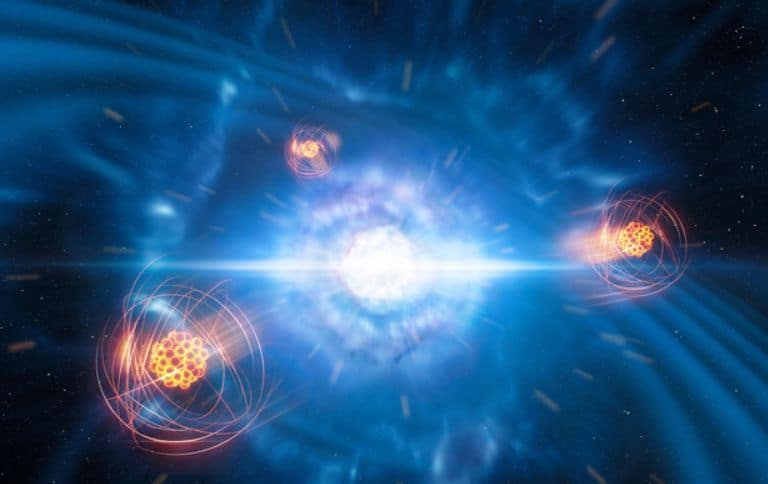Astronomers first proved the fact of the formation of strontium during the r-process, which occurs during the fusion of neutron stars. This discovery was made during a reanalysis of the data obtained with the VLT telescope while tracking the kilon.
In mid-August 2017, astronomers simultaneously detected gravitational waves and gamma radiation from two merging neutron stars, located about 130 million light-years from Earth, in the elliptical galaxy NGC 4993 in the constellation Hydra. Further observations in different ranges of the electromagnetic spectrum made it possible to unequivocally confirm the existence of kilon, which is about 1000 times more powerful than ordinary novae. Theorists have predicted that kilonths can arise from the fusion of neutron stars or a neutron star and a black hole. Such disasters create favourable conditions (high temperature and powerful neutron fluxes) for the r-process – the birth of heavy elements, such as gold or uranium, by rapidly capturing neutron nuclei.
The most detailed spectra of the KW GW170817 were obtained with the X-shooter spectrograph mounted on the VLT telescope in Chile. Spectra allow you to track how the brightness of the flash changed at different wavelengths (from ultraviolet to near infrared of the electromagnetic spectrum) in the period from 1.5 to 10 days from the moment of registration of the kilon. An early analysis of these spectra showed signs of the presence of cesium, tellurium, gold, and platinum in the material ejected after the outbreak, however, there was no reliable data on the registration of individual elements for a long time because of the complexity of the analysis of the spectra.
A group of astronomers led by Darach Watson of the University of Copenhagen reported the identification of strontium atoms from the absorption lines found from a reanalysis of the spectra of kilon GW170817 obtained on VLT. Theories predicted that the most common elements generated during the r-process, such as strontium, yttrium and zirconium, can be easily detected in a rarefied hot plasma, since these elements have low excitation potentials for their singly charged ions. Thus, scientists were able to confirm that the heavy elements formed as a result of the r-process are really born during the fusion of neutron stars, which seriously complements the current picture of stellar nucleosynthesis. The presence of other heavy elements with A> 140 in the expanding kilon residue is not yet proven, but not refuted, it is assumed that they can exist in the inner parts of the residue.
